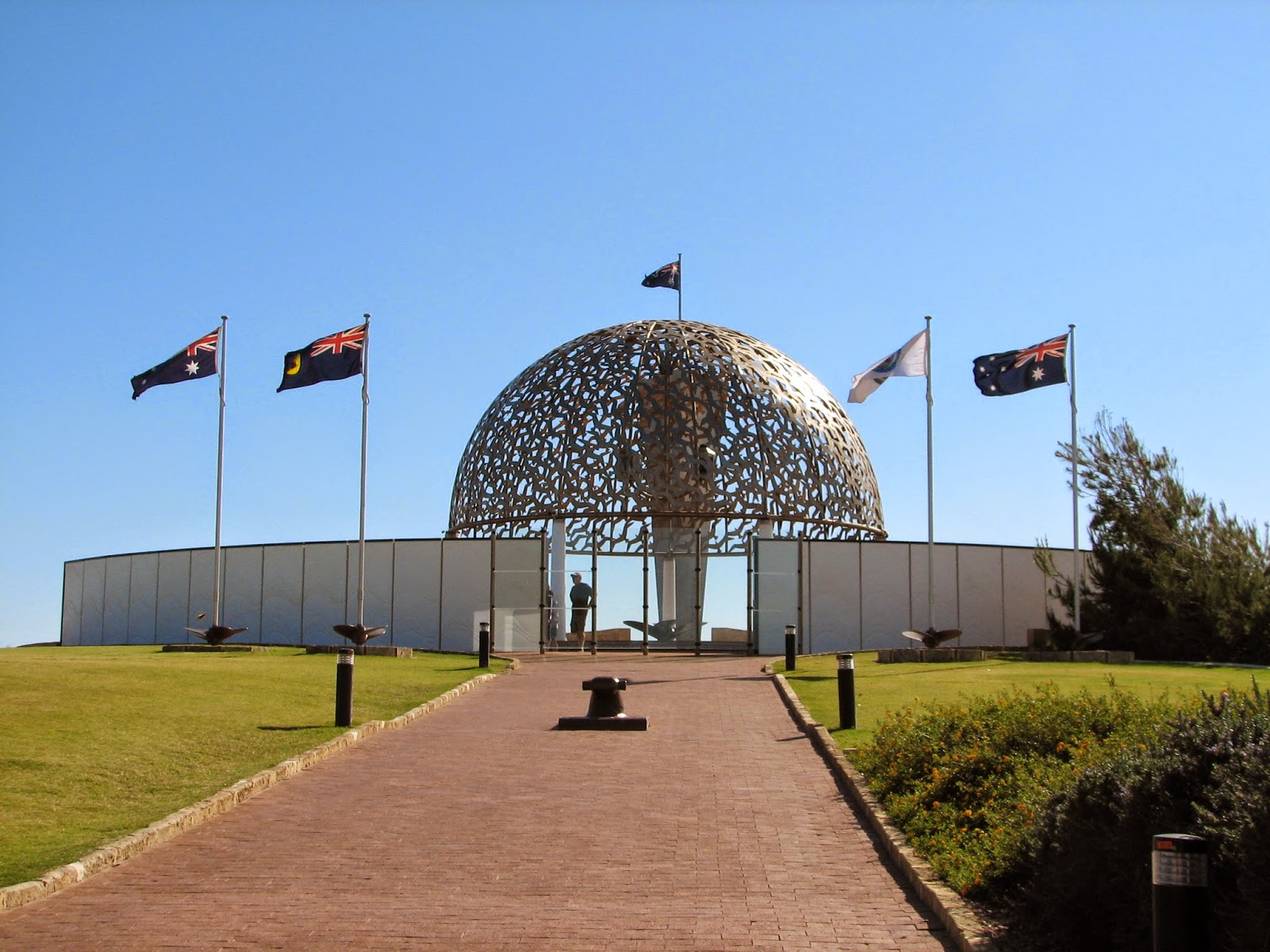As usual the imagination of people never ceases to amaze us. Check out the numberplate.
 |
| 130814 A number plate of which any Lexus owner would be proud |
The wreck of HMAS Sydney was found in March 2008.
 |
| 130814 The HMAS Memorial at Geraldton |
 |
| 130814 The seagull in the sunken fountain |
 |
| 130814 The bronze statue of a woman waiting on the shore waiting for news |
 |
| 130814 Geraldton from the HMAS Sydney Memorial site |
We also had time to visit the museum and were entertained by a staff member who related the story of the Batavia, shipwrecked on the Zuytdorp cliffs near Steep Point. One interesting aspect was that some of the Batavia's ballast, sandstone from Germany, was to be used to construct a portal on one of the forts in Batavia. The sandstone ballast was recovered from the wreck site and reconstructed in the museum.
 |
| 130814 The reconstructed portal planned for the fort at the original island of Batavia |
The museum also had a display featuring the machines invented by Leonardo Da Vinci. There were fifty of them which are doing a world tour currently. We were quite selective about the ones we photographed. What a man he must have been.
 |
| 130814 A LDV invention - a car driven by wooden springs |
 |
| 130814 A LDV invention - a differential |
 |
| 130814 A LDV invention - a bike with a flexible chain drive |
 |
| 130814 A LDV invention - a forerunner of today's helicopters |
No comments:
Post a Comment